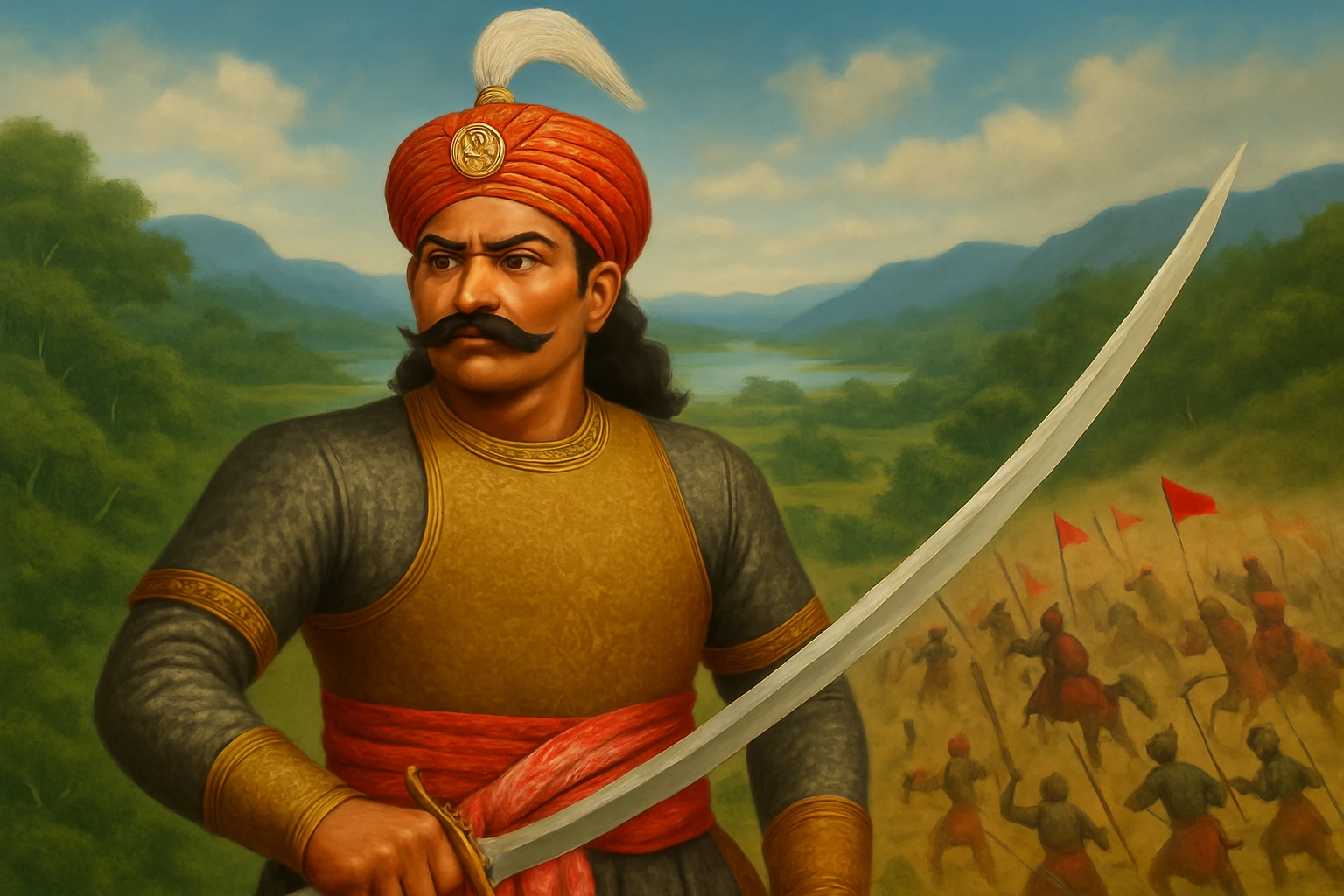Did you know that in the early 13th century, a fearless warrior king from Assam stood tall against one of the most feared invaders of medieval India? Maharaja Prithu, the legendary ruler of the ancient Kamarupa kingdom, successfully defeated the notorious Bakhtiyar Khilji, who had destroyed some of India’s greatest centers of learning like Nalanda and Vikramshila. His heroic resistance not only protected his kingdom but also preserved the cultural heritage of northeastern India from foreign conquest. Let’s explore the fascinating life, bravery, and legacy of this forgotten warrior king who shaped the history of Assam.
Who Was Maharaja Prithu?
Maharaja Prithu, also known as Raja Prithu or Prithu Rae, was the powerful king of the Kamarupa kingdom, located in present-day Assam and parts of neighboring regions. He belonged to the Khen dynasty, believed to be descendants of the legendary Narakasura. His reign is estimated to have lasted from around 1195 to 1228 CE. The Kamarupa kingdom during his rule was a rich, culturally vibrant region, and Prithu is praised for his leadership and military prowess.
The Invasion Of Bakhtiyar Khilji
In 1206 CE, following his destructive raids in Bihar and Bengal, including the sacking of the renowned Nalanda University, the Turko-Afghan general Bakhtiyar Khilji set his sights on expanding his empire towards Kamarupa. His formidable army, composed of about 12,000 cavalry and 20,000 infantry soldiers, marched into the region with the aim of conquering it.
Also read: Maniram Dewan: The Father of Assam Tea and Pioneering Freedom Fighter
Maharaja Prithu had been closely monitoring Khilji’s military advances, anticipating the threat. When Khilji’s forces entered the plains near Pragjyotishpura (modern-day Guwahati), Prithu united various local tribal groups, including the Bodo, Koch Rajbongshi, and Keot communities, to resist the invasion. Using superior knowledge of the terrain and clever guerrilla warfare tactics, Maharaja Prithu cut off the invaders’ supplies, blocked their retreat paths, and ambushed them repeatedly.
The Decisive Victory
The battle tactics employed by Maharaja Prithu were highly effective. He implemented a scorched-earth policy by evacuating villages and destroying resources that could aid the invading army. His forces trapped Khilji’s troops, inflicting heavy casualties, and forcing the invaders into a devastating retreat. Historical records, including the Kanai Basasi Rock Inscription, attest to this massive defeat of the Turkish army within Kamarupa.
According to inscriptions and regional lore, the defeat was so severe that Bakhtiyar Khilji never recovered, dying shortly after the defeat. Maharaja Prithu’s victory was not only a military triumph but also a strong statement of cultural resistance, preserving the independence and heritage of northeastern India from foreign domination.
Later Life and Legacy
Despite this great victory, Maharaja Prithu’s kingdom faced further invasions. In 1228 CE, during an attack led by Nasiruddin, son of Sultan Iltutmish, Prithu was eventually defeated. Refusing to surrender, legend says he chose to end his life by drowning himself in a tank called Maharajar Dighi, demonstrating his unwavering commitment to protect his people’s dignity and sovereignty.
Today, Maharaja Prithu is honored as a warrior king and a heroic defender of Assam. His legacy lives on through historical inscriptions, folklore, and commemorations like the naming of prominent landmarks after him in Guwahati. Prithu remains a powerful symbol of courage and pride in Assam’s rich history.
Frequently Asked Questions (FAQs)
Q1: Who was Maharaja Prithu?
A1: Maharaja Prithu was a warrior king of the Kamarupa kingdom in Assam, known for defeating the invading army of Bakhtiyar Khilji in the early 13th century.
Q2: When did Maharaja Prithu rule?
A2: He reigned approximately from 1195 CE to 1228 CE.
Q3: What was significant about his battle with Bakhtiyar Khilji?
A3: Maharaja Prithu’s victory stopped Khilji’s expansion into northeastern India, preserving local culture and independence.
Q4: Which dynasty did Maharaja Prithu belong to?
A4: He belonged to the Khen dynasty.
Q5: How is Maharaja Prithu remembered today?
A5: He is honored as a symbol of valiant resistance and protector of Assam’s heritage, with several memorials and landmarks named after him.
Multiple Choice Questions (MCQs)
- Maharaja Prithu was a king of which ancient kingdom?
a) Magadha
b) Kamarupa
c) Vanga
d) Maurya
Answer: b) Kamarupa - Who was the invader defeated by Maharaja Prithu?
a) Mahmud of Ghazni
b) Bakhtiyar Khilji
c) Alauddin Khilji
d) Babur
Answer: b) Bakhtiyar Khilji - What tactics did Maharaja Prithu use against the invading army?
a) Naval warfare
b) Scorched earth and guerrilla tactics
c) Siege warfare
d) None of the above
Answer: b) Scorched earth and guerrilla tactics - When did the battle between Maharaja Prithu and Bakhtiyar Khilji approximately occur?
a) 15th century CE
b) 10th century CE
c) Early 13th century CE
d) 16th century CE
Answer: c) Early 13th century CE - What is Maharaja Prithu’s cultural significance?
a) Founder of Buddhism
b) Promoter of foreign invasions
c) Protector of Assam’s culture and independence
d) None of the above
Answer: c) Protector of Assam’s culture and independence
Summary
Maharaja Prithu stands out as a heroic figure in Indian history for his fearless defense of the Assam region against the powerful Turko-Afghan invader Bakhtiyar Khilji in the early 1200s CE. His strategic brilliance and bravery stopped the expansion of foreign armies, preserving the cultural heritage of Kamarupa. Remembered as a warrior king and patriot, Prithu’s legacy continues to inspire pride and unity in northeastern India.

